Feature photo by Nancy Crowell
If you ask most photographers newly focused on birds what they would most like to photograph, odds are your top response will be “owls!”
Indeed, owls are one of the most sought-after birds among wildlife photographers – but one of the trickiest to find and photograph.
This guide walks you through the how and why of creating gorgeous photos with minimal impact on your subject.
Follow the advice in this guide, and you'll have everything you need to photograph owls like an expert!
Contents
- How to find owls to photograph
- How to find owls to photograph
- Techniques for great owl photos in the field
- Camera settings for owl photography
- What to avoid when photographing owls (and why it matters)
- How to share your owl photos on social media
- Why owls are amazing wildlife conservation ambassadors
How to find owls to photograph
In fact, many photographers who find an owl will shoot photos and not post them until weeks or even months later to protect the owl from crowds of photographers stressing it.
So, how do you discover owls in your area? A bit of reading and networking goes a long way.
Photo: Ray Hennessy/Shutterstock
The key to finding owls to photograph is understanding each species' unique behavior, life cycle and habitat preferences. You'll know where and when to look for the owls you'd most like to see.
Start with field guides
Field guides are an essential tool for any bird photographer. They provide detailed information on physical characteristics and behaviors, plus range maps showing areas where the owls live.
When choosing a field guide, select one that is visually engaging and up-to-date. A great field guide should include clear images of each species, with close-up views of their key features such as the facial disk, wings, and plumage.
Study the range maps in the field guide to discover which species are in your area.
Then, study how to identify them. Study noticeable features such as:
- coloration on feathers
- if the species has ear tufts
- where they likely roost
- the habitat they prefer
- what they eat
- and other information that'll reveal how to spot them in the wild
For instance, short-eared owls can be active during the day. Barred owls might perch on branches lower in a tree than expected. Snowy owls might land on a beach when they migrate. Great horned owls nest in large nests built by hawks (they don't build their own).
Do your research and learn all you can about the behavior and life of the owls you seek.
Cornell Lab of Ornithology's Birds of the World is also an incredible online resource. It provides in-depth information about each owl species, plus recordings of their vocalizations, which helps when you're birding by ear.
Photo: kodec/Shutterstock
Become skilled at spotting sign and you'll dramatically increase how frequently you photograph owls. Owl pellets, such as this one, are an exciting clue to discover in the field.
Learn to spot owl sign
To photograph owls successfully, you'll need to become an expert at spotting signs of them in the landscape.
Keep an eye out for pellets, which are the regurgitated bones and fur of their prey. You'll find these round or oval-shapped balls on the ground near their roosting areas.
Another sign to look for is whitewash, which is their excrement. You'll see this on trees, rocks, and other surfaces beneath their roosting areas.
Study owl behavior
It's also essential to learn the specific body language of different species. What does that owl look like when it is relaxed? How about when it's alert for hunting? What does it look like when it is nervous or stressed?
Knowing an owl's behavior helps you predict key moments for compelling photos and informs you if YOU are the cause of an owl becoming stressed so you can adjust accordingly.
The behavior of other birds can help you, too. Other smaller birds will make a racket if an owl is nearby – often swooping down to attack the owl. Being aware of this “mobbing” can lead you straight to an owl.
Photo: Danita Delimont/Shutterstock
Owls are masters of camouflage, as this eastern screech owl demonstrates. But once you know what features in the landscape to look for, you'll zero in on even the most well-hidden owls.
Birding apps, forums, and online birding communities
Plenty of birding groups and forums exist on Facebook and other social platforms.
Some local birding groups will have WhatsApp chat groups or private forums where users post location information.
Research groups in your area and lurk for a while to see how the users behave if you can. I'd avoid groups that broadcast sensitive location information to large numbers of people.
There can also be genuine conflict between birders and bird photographers. Because people tend to overwhelm owls, most birders know better than ever to reveal the location of their subject.
eBird, the bird sighting list site run by the Cornell Lab of Ornithology, no longer publishes exact locations for some species. So, you may get an idea of where owls are from their range maps, but unlikely you'll find a map with directions on their site.
When I started looking to photograph owls, I joined my local Audubon chapter. I got to know other wildlife photographers known for their owl photography. Gradually, I gleaned information on locations near me.
But you need to know going in that if you ask someone directly where they shot an owl photo, they are unlikely to tell you, especially if you ask that question on a public forum. In my experience, you need to prove you're trustworthy and ethical before someone shares location information.
For most of us, the fun of wildlife photography can be in the search itself. It's genuinely rewarding when you successfully locate your subjects on your own.
Photo: Ray Hennessy/Shutterstock
While it's tempting to focus on close-up shots, there's beauty in photographing an owl in its habitat. With this burrowing owl positioned to the far left of the frame, viewers get a great sense of its grassy habitat. Experiment with shots that frame your subject small in its environment.
Techniques for great owl photos in the field
It's one thing to locate an owl, and another entirely to get great photos. Before ever worrying about camera settings, consider your set-up.
Use a telephoto lens
It goes without saying that you need a long lens. The goal is to shoot images of the owl without disturbing it. If an owl is sleeping and you wake it up, you are disrupting it.
If an owl is sitting on a branch listening and looking for prey, then starts to puff up and extend a wing to make itself look larger, odds are you have disrupted its hunting. It's trying to look bigger to scare you off.
If you enter an owl's territory and it suddenly swoops at you, you've gotten too close.
So the big benefit of a telephoto lens is it allows you to capture detailed images of the owl from a comfortable distance.
Additionally, the narrow field of view of the telephoto lens allows you to isolate the owl and create a more atmospheric and dramatic image.
Owls are often perched in the chaotic environment of branches or grasses. So, being able to isolate them from the background with a telephoto is extremely helpful.
Because prime telephoto lenses generally have a wide aperture range, they are also ideal for low-light situations, which makes them perfect for owls.
Photo: Marek Rybar/Shutterstock
A photography blind is a great way to get closer to your subject without disturbing it. When you'll be hanging out in an area with owl activity, use a pop-up blind and wait patiently. You'll be that much more likely to photograph cool behaviors like hunting or preening.
Stay out of view with a photo blind
It's important to pay close attention to the owl's reaction to you. Ideally, it doesn't react because you are far enough away not to disturb it! Even better, if you set yourself up in a blind, you can observe the owls with impunity.
A pop-up photo blind is an essential tool for wildlife photographers who want to get close-up photos of owls without disturbing them. These blinds provide a mobile, camouflaged shelter that allows you to remain hidden from the raptors' view while providing excellent shooting conditions.
(Side note: pop-up blinds are also helpful to keep you outside even in crummy weather. So they're a win-win!)
A great place to find well-made portable pop-up blinds built specifically for photographers is Tragopan Photography Blinds. These blinds are co-designed by professional conservation photographer Gerrit Vyn, who is world-renowned for his bird photography.
Pick a spot and observe
I can't emphasize enough the usefulness of picking a spot and simply watching. You might find an owl hunting in a particular pattern and time frame. Once you understand where and when it is flying, you can position yourself to get something special, such as a backlit shot.
Often you'll find an owl when it's perched in a tree, perhaps in a less-than-ideal composition. Sitting still and waiting gives you the opportunity to see it move around its environment and likely you'll get great photos by waiting quietly.
Waiting also allows for creative opportunities. For instance, owls become active when the sun is low, which creates great opportunities for backlighting and side lighting. Explore using creative techniques – like leaning into the dark drama of low-key photos or the bright airy feel of high-key photos – to craft unusual and interesting portraits.
Photo: Ray Hennessy/Shutterstock
It's exciting to photograph owls at dawn and dusk because of the opportunities to play with backlight and side light. Experiment with underexposing to get silhouettes rimmed with gold.
Camera settings for owl photography
Once you're in position, it's time to dial in camera settings ideal for owls.
Get comfortable with high ISO
It's true owls are typically most active during dawn and dusk (with some exceptions) and at night. Be prepared to shoot at a higher ISO than you might normally choose.
Use an ISO as high as your camera can go without becoming too noisy. You may also want a tripod or monopod.
Owls can stay perfectly still for a long time, so it is possible to shoot at a slow shutter speed, allowing you to keep your ISO a little lower. However, most of today's cameras can handle a very high ISO setting without becoming overly noisy. I once shot a picture of a great gray owl at 10,000 ISO, and it was perfectly fine for printing, not too noisy.
To avoid noisy images, expose to the right and keep checking your histogram to be sure you don't overexpose. This method helps you retain detail in the dark areas of the image.
Use your widest aperture
If you have a fast lens (f/4 or f/2.8) you can get lower ISOs by opening up to that widest aperture.
You'll have a shallower depth of field, but because owls have disk-shaped faces, this is less an issue than birds with long beaks.
Nevertheless, focus on the eyes to get those compelling portraits.
Play with slow shutter speeds
If the light is getting too dark for your camera to handle, get creative and try slow shutter speeds for flight photos. You might be surprised by the artistic results.
For most birds in flight, I recommend 1/2000, but I often shoot at 1/1600, 1/1000, or even 1/800, depending on the light or the effect. If I want a true blur, I may shoot at 1/30 of a second. Experiment to see what works for you.
Trying different techniques will help you create compelling images that stand out from others, especially if you're shooting something as common as barn owls.
Another technique is to set up your camera on a tripod and use a remote trigger to shoot while standing farther away.
Whatever you can do to keep the owls safe should be your number one choice.
Photo: Kersti Lindstrom/Shutterstock
Great gray owls are an exciting species to photograph. Witnessing them quietly hunting over a snowy field is an exhilarating experience. When you're patient, you'll be rewarded with an owl swooping by or landing on the perfect perch for a portrait.
What to avoid when photographing owls (and why it matters)
While it's vitally important to approach all wildlife photography ethically, owls seem particularly vulnerable to bad outcomes when humans do not behave ethically.
Ideally, you don't want to interfere with any creature's natural behavior. It can mean the difference between life and death for them, while it's just a photograph to us.
Never bait an owl with live or dead prey
An owl, like any creature accustomed to being fed by humans, is compromised. It may become dependent on humans for a meal. It may try to get closer to humans that offer food, and the consequences can be deadly for the owl.
Many photographers new to wildlife photography don't realize this. I have a friend who joined a workshop to shoot snowy owl photos. She didn't understand the implications when the workshop leader said he would be baiting the owls.
Once she understood the cruelty of purchasing pet mice to toss out as food for the owl, and the dangers to the owl itself, she felt terrible about having supported this practice.
Don't make the same mistake. If you see a workshop that guarantees you great owl action shots, ask them directly if they will be baiting the owls.
To learn more about why it's bad to bait owls, see this story from an owl researcher.
Avoid using recorded calls
Some people will use their phones to play a call that might bring an owl to them. This is considered a bad practice by anyone who cares about birds.
Owls use their vocalizations to find out who is in the area, like an enemy or potential mate. So, recorded calls can raise stress levels or distract the owl from hunting to feed itself or its chicks. An owl will investigate the sound, wasting precious calories. A recorded call might mean photo opportunities to you, but it means stress an hunger for the owl.
If you do your research and spend enough time looking in the right places, you will be successful without such aids. Listen to the recordings at home to become familiar with the vocalizations, but don't use them in the field.
Instead, utilize techniques such as patience and stealth to get closer photos of your subject without disrupting them or putting them at risk.
Photo: Jaymi Heimbuch
When you find an owl actively hunting, pause to watch and see if there are patterns you can take advantage of. For instance, a short-eared owl may fly back and forth over the same area, looking for a meal. Noticing the flight pattern allows you to get in a position for great shots without disturbing the hunt.
Avoid photographer jams
The presence of an owl can bring photographers out in droves. This is especially true if it's an unusual sighting, like snowy owls migrating.
However, too many people spell trouble for the owl. It makes it harder for the animal to hunt or rest. Conversely, photographer jams can cause an owl to become habituated to people, which in turn may lead the owl to be less wary of serious dangers like road traffic.
Often it's helpful to connect with a private property owner who has an owl or two living on the land and gives you access permission. It's a chance to enjoy watching an owl without worrying if someone else will show up.
Photo: Fine Art Photos/Shutterstock
Burrowing owls are a great species to photograph as they're is often active during the day. When you keep your distance, you'll be rewarded with relaxed subjects and fantastic behavior shots like this moment of a burrowing owl parent feeding its young.
Avoid flash photography
Using flash photography when photographing owls can have numerous adverse effects that could put the bird's safety at risk. Flash photography can cause stress to the owl, startle them, and even disrupt their normal behavior.
Furthermore, in areas with low light levels, such as nocturnal environments, flashing a bright light may scare away potential prey items or attract unwanted attention from potential predators.
While it is possible to get great photos of owls using flash photography if done properly, it is best to avoid it out of respect for these creatures and their safety.
Consider this “limitation” an opportunity to get creative and explore different photo technologies, like infrared.
For example, this story photographed by Morgan Heim about northern spotted owls was photographed entirely in infrared. Heim was able to capture natural moments in near darkness without the use of speedlights.
Be extremely careful when photographing nests
If you're lucky enough to find an owl nest, never reveal the owl's location and be very careful when nearby.
Young birds are vulnerable, and it's all too easy to scare off a hard-working parent with a meal that means the difference between life and death for them.
It's common for fledgling owls to end up on the ground when they are learning to fly. If you come across a fledgling on the ground, back away and observe from a distance. Often fledglings will climb the tree back up to a safe perch.
Never use a drone to photograph a nest as it is perceived as a predator and stresses the birds.
For more guidance on ethical bird photography, check out this guide from the National Audubon Society.
Photo: Ray Hennessy/Shutterstock
Awkward but adorable, it's an absolute joy to watch young owls figure out the world around them. Just take note to be extra aware of your behavior when you're near an owl nest so as not to disturb.
Don't overstay your welcome
When you see your first owl, it can be tempting to stay too long in its presence. If you're in a blind or standing quietly in one location, it might be okay to stay a while. But if you're constantly jockeying for position to get a better, closer shot, odds are you are stressing the owl.
I often use my car as a blind. Many birds are less disturbed by a car than by a human. This isn't possible if I'm out in the woods looking for an owl, so I do my best to stay very quiet and still.
There are also handy portable blinds available, such as those from Tragopan which are build specifically for photographers.
While everyone loves a good close-up of those compelling disc-shaped owl faces, more and more photographers are stepping back and taking wider-angle photos that reveal the owl in its environment. With the high megapixels available in today's cameras, you can often crop a wider shot to get the tight image you want.
No matter how thrilled you are to see and photograph an owl, try to keep the safety and health of the owl front and center. Embrace the experience and don't overstay your welcome.
It's a joy when wild creatures let us into their space but also a risk to their safety. You might alert other birds to their presence. You might disrupt their hunting and make them miss a meal.
There are so many ways you could unintentionally impact an owl's life. Remember this when your heart is beating so fast you can barely press the shutter button. Take your pictures and move on.
Photo: Jaymi Heimbuch
When photographing an owl in flight, it's easy to accidentally focus on its wings rather than its head. Use a single autofocus point or single-point plus assist to gain more control over exactly where your camera is focusing so you can get a tack-sharp eye.
I've already emphasized the importance of not sharing location information. If you don't strip that information from your EXIF info, you might unwittingly share an exact location.
You can turn GPS off in your camera or strip the information from the file with software like Lightroom.
With Lightroom, simply open the image in Library mode and look at the metadata listed. Remove this data before you export images for social media or use on your website.
As exciting as it may be to share you've photographed an owl, if you can wait before posting, it’s likely better for the owl. I sometimes wait to post photos months after I capture them.
I know, I know… you really want to show people what you shot. And you should! You worked hard to make it. But remember that what's just a photograph to you can be life or death for birds that might get stressed or harassed by too many people. They're just out there trying to survive.
So take your time, share thoughtfully, and everyone benefits.
Photo: Jaymi Heimbuch
When you find a burrowing owl, it's important to be extra respectful of space since not only did you find a burrowing owl but likely also its burrow! If you are extra careful and don't cause it to abandon its home, you'll be able to photograph it for hours – or weeks – on end!
Why owls are amazing wildlife conservation ambassadors
They also make good ambassadors for teaching people about nature and compelling them to care.
The fate of the northern spotted owl in the Pacific Northwest is one story that comes to mind immediately, as the logging industry and environmentalists fought a bitter battle to save this species when it became clear that logging was destroying their forest homes.
Although logging stopped in many places, they're still in decline due to the emergence of barred owls, which found their way from the east coast via the corridors created by felled trees.
Photo: Jaymi Heimbuch
Even common species like barred owls are thrilling to find and photograph. There's just something about them that stands out from other raptors. It's a joy to not only photograph owls, but simply witness them living out their extraordinary lives.
Final Thoughts
I love photographing owls. I hope you have luck photographing owls yourself. You can help keep them around by both creating compelling photographs ethically and also by doing research and sharing great information alongside your amazing photos.


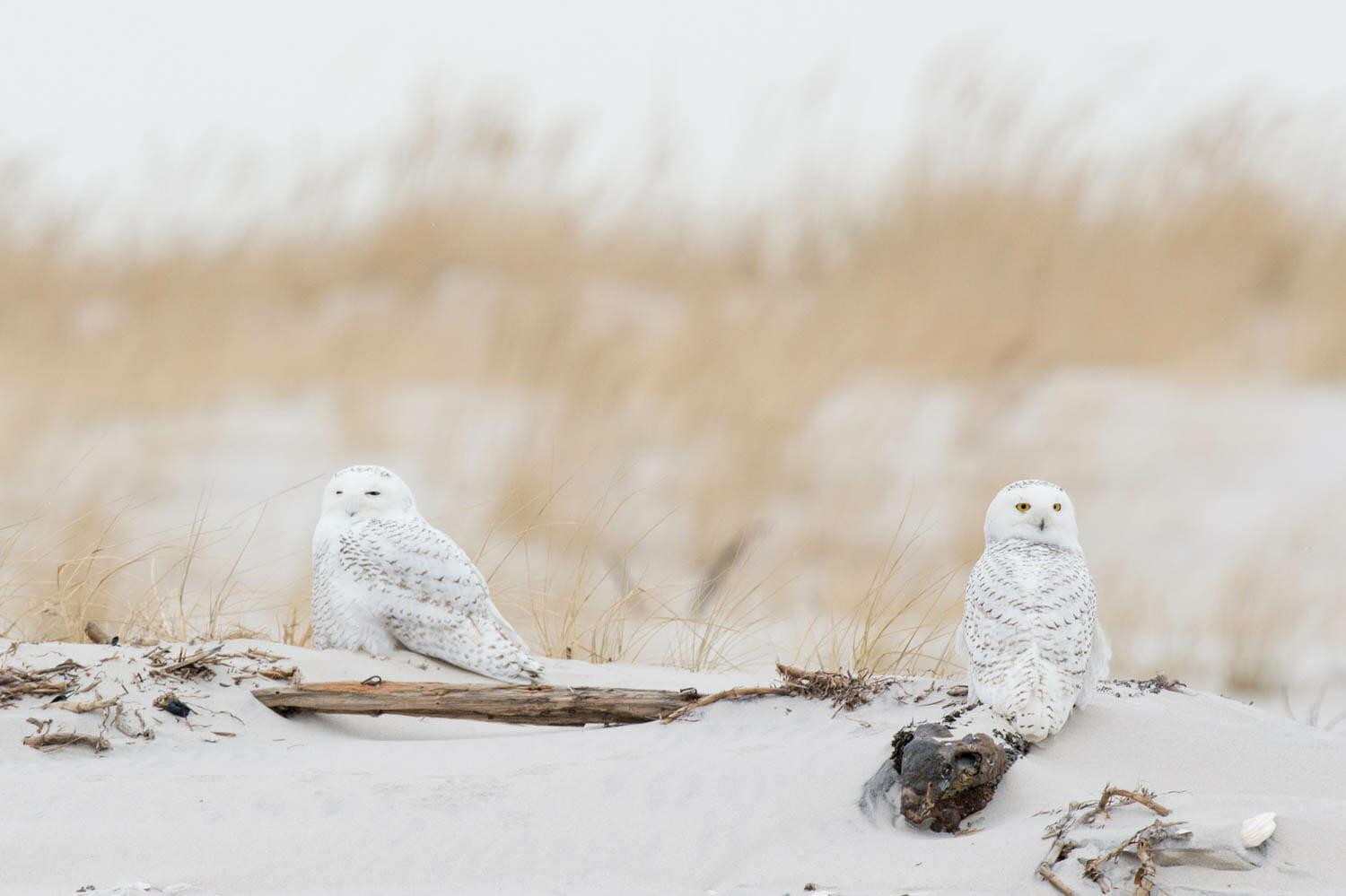
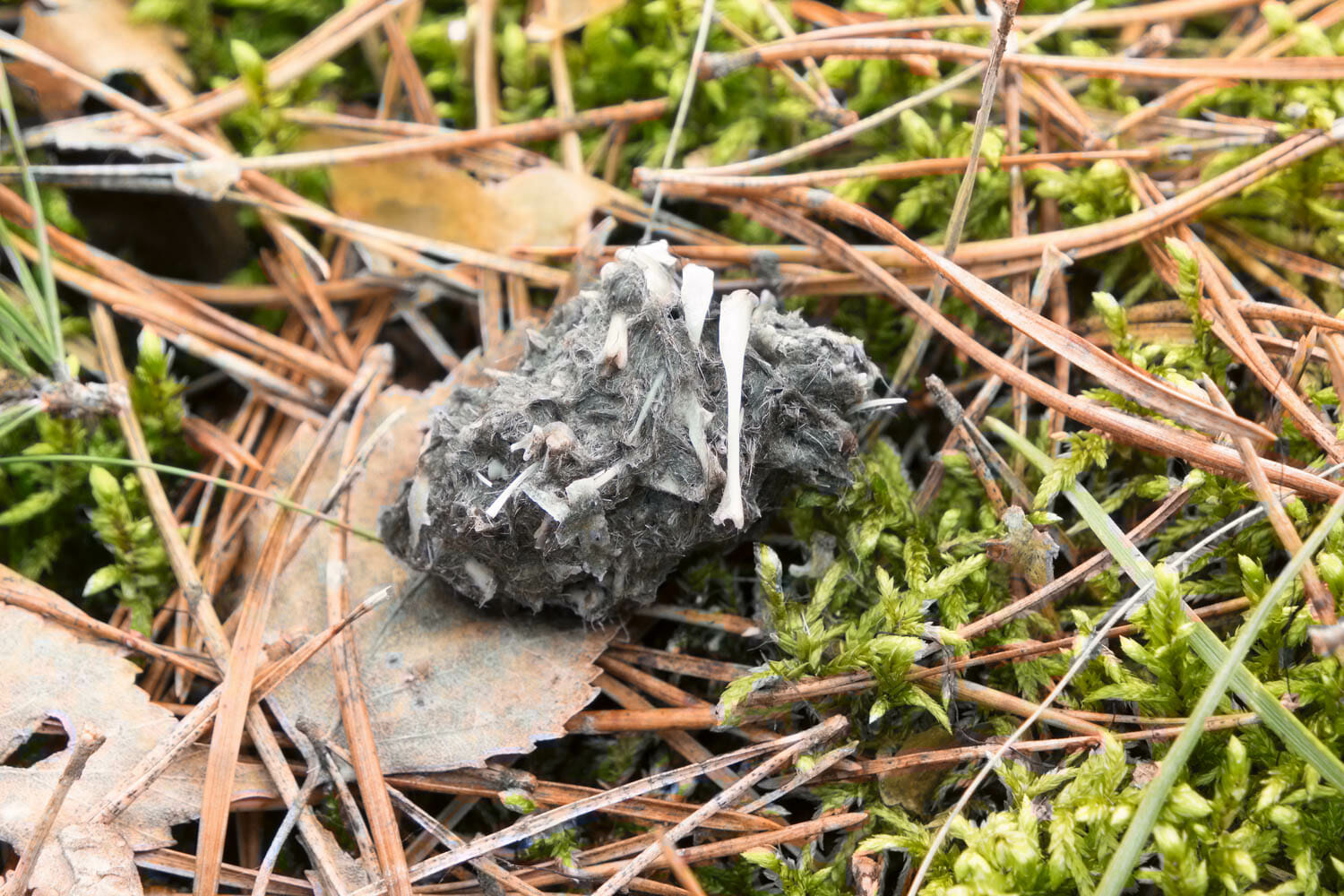
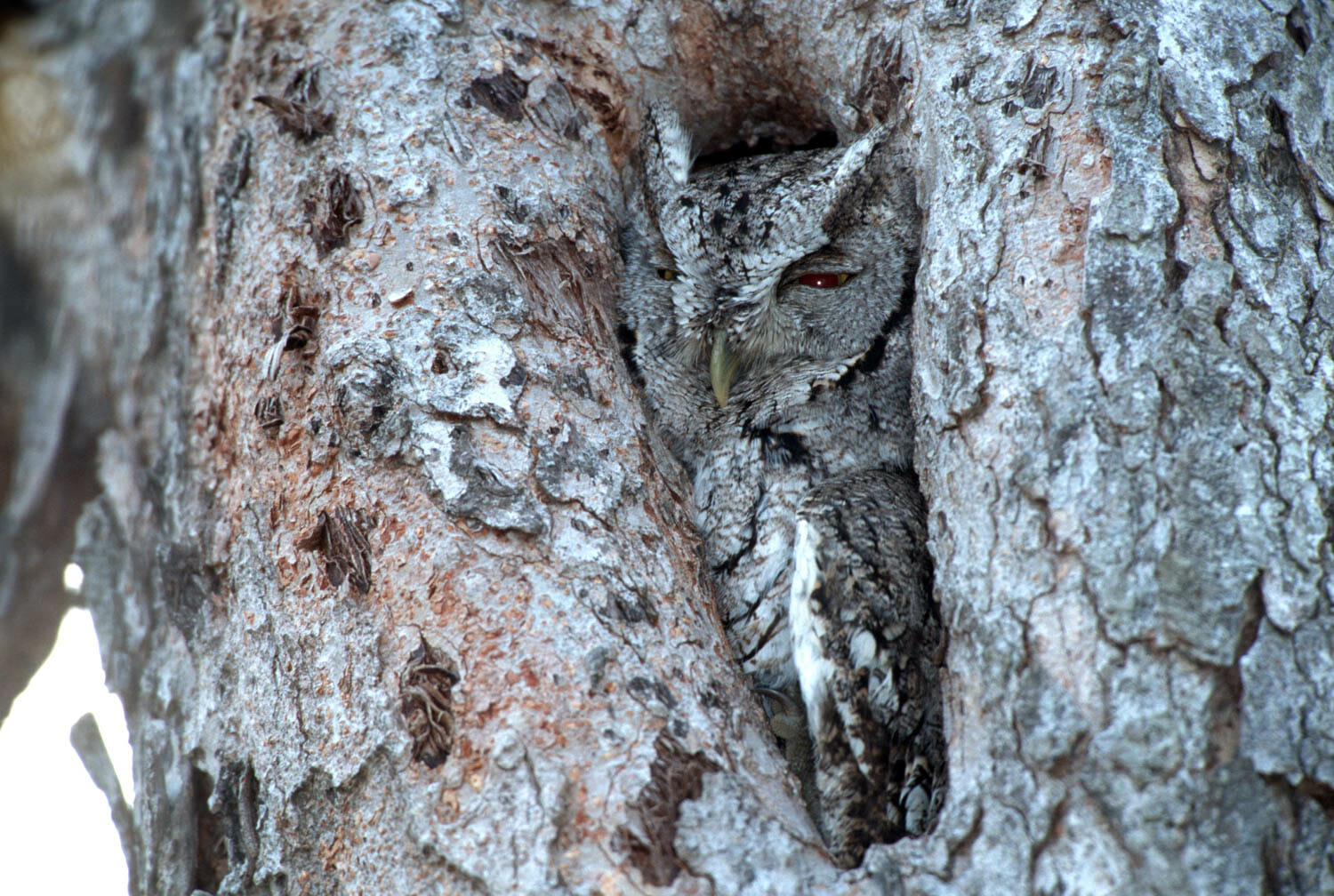

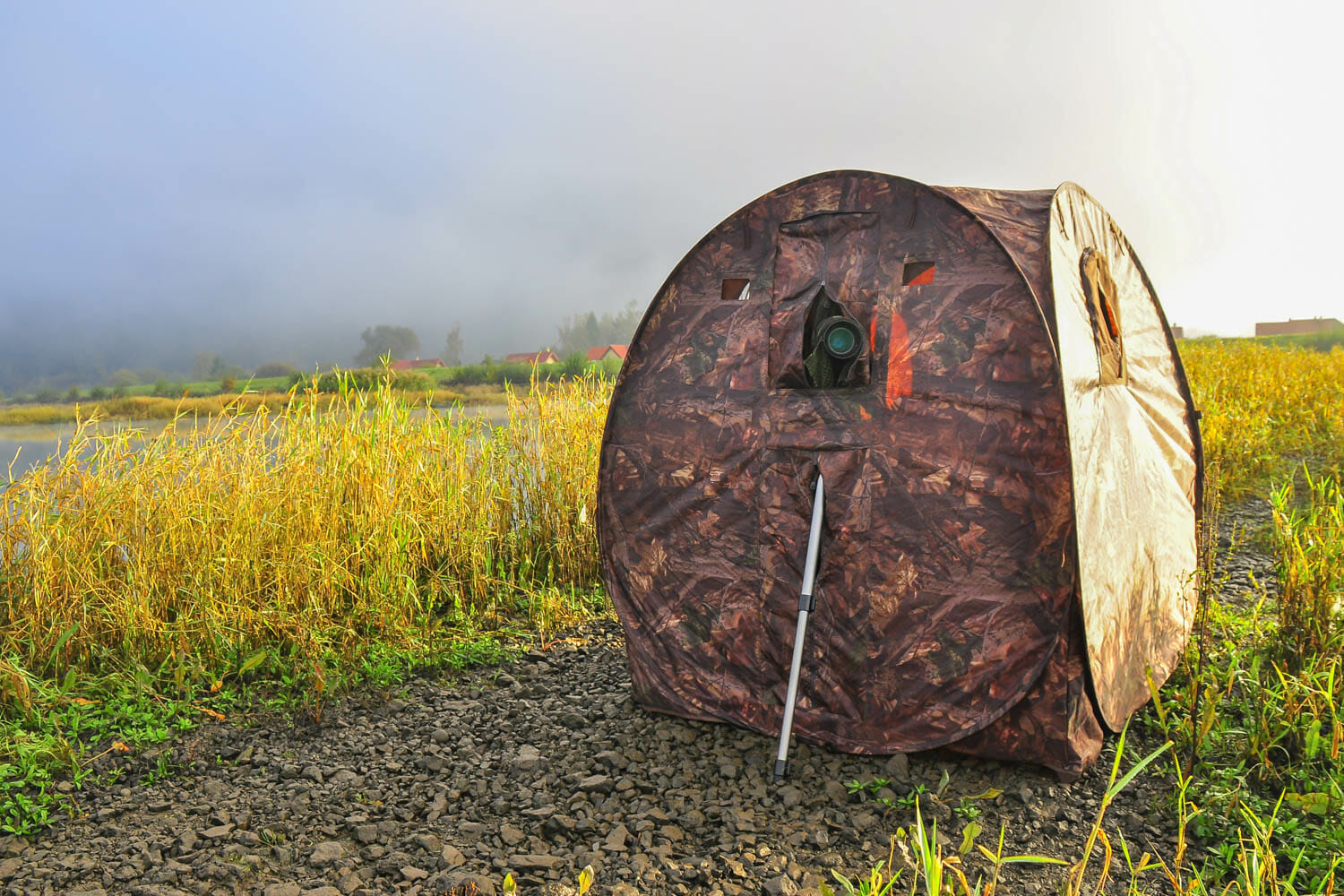

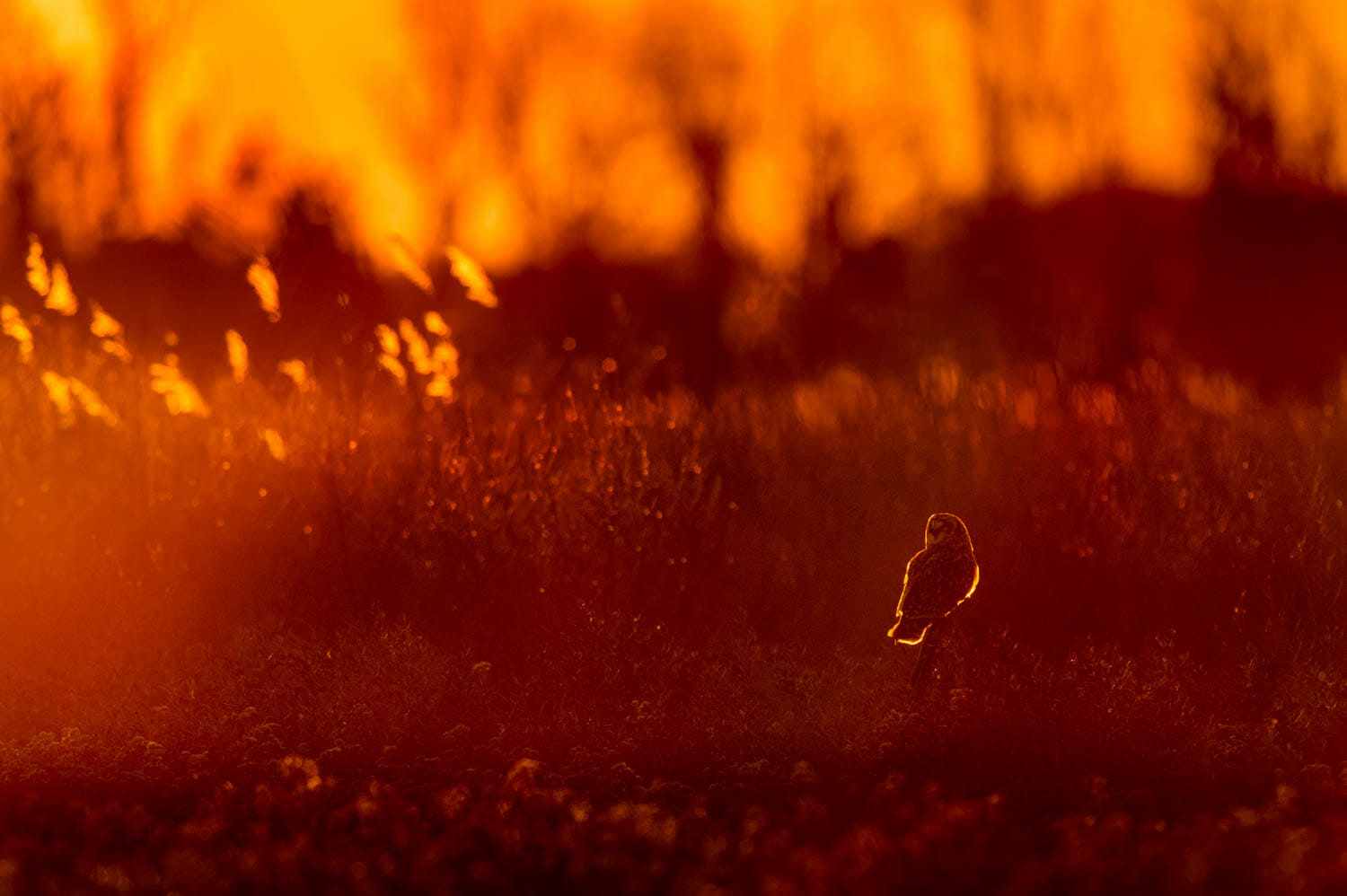
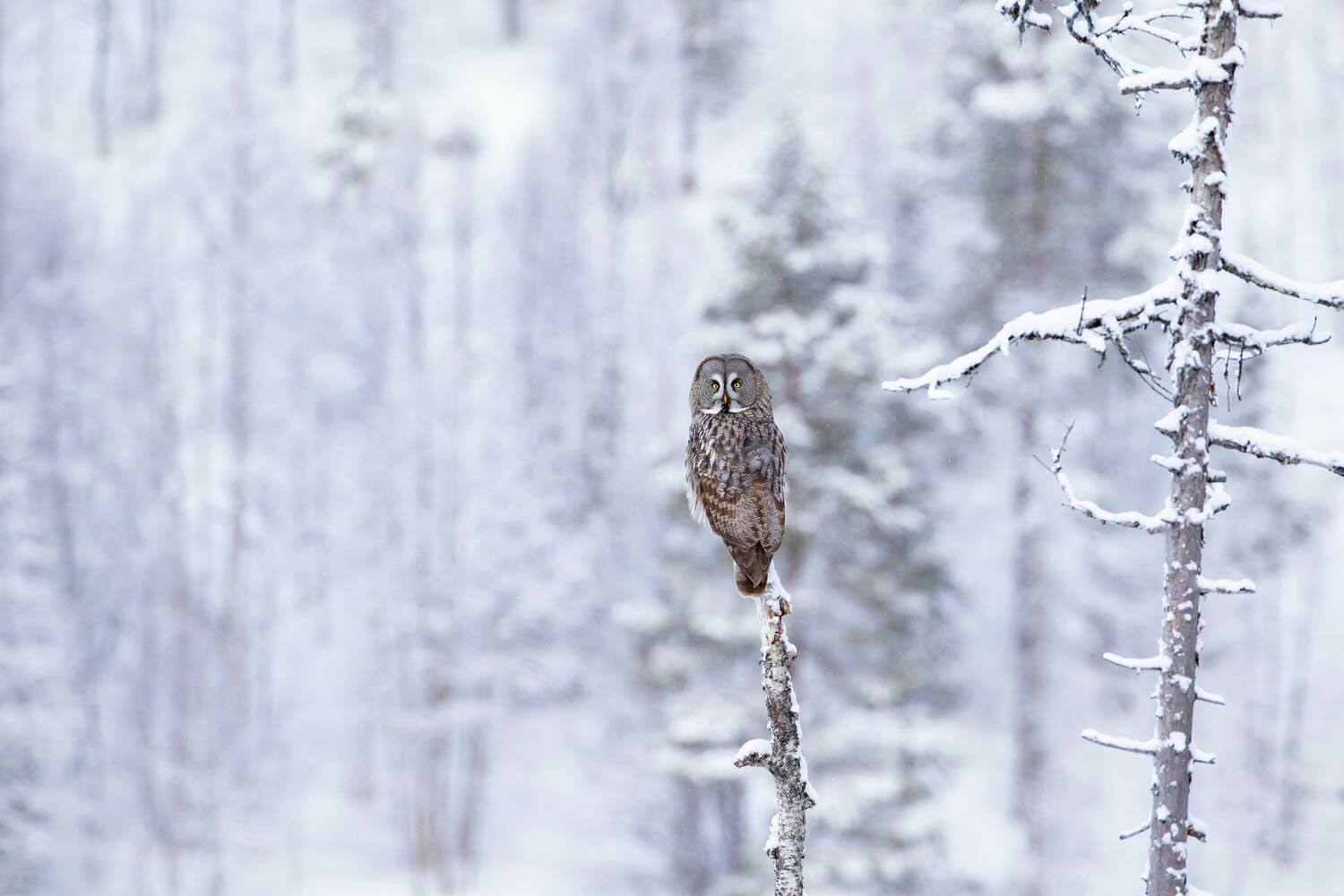
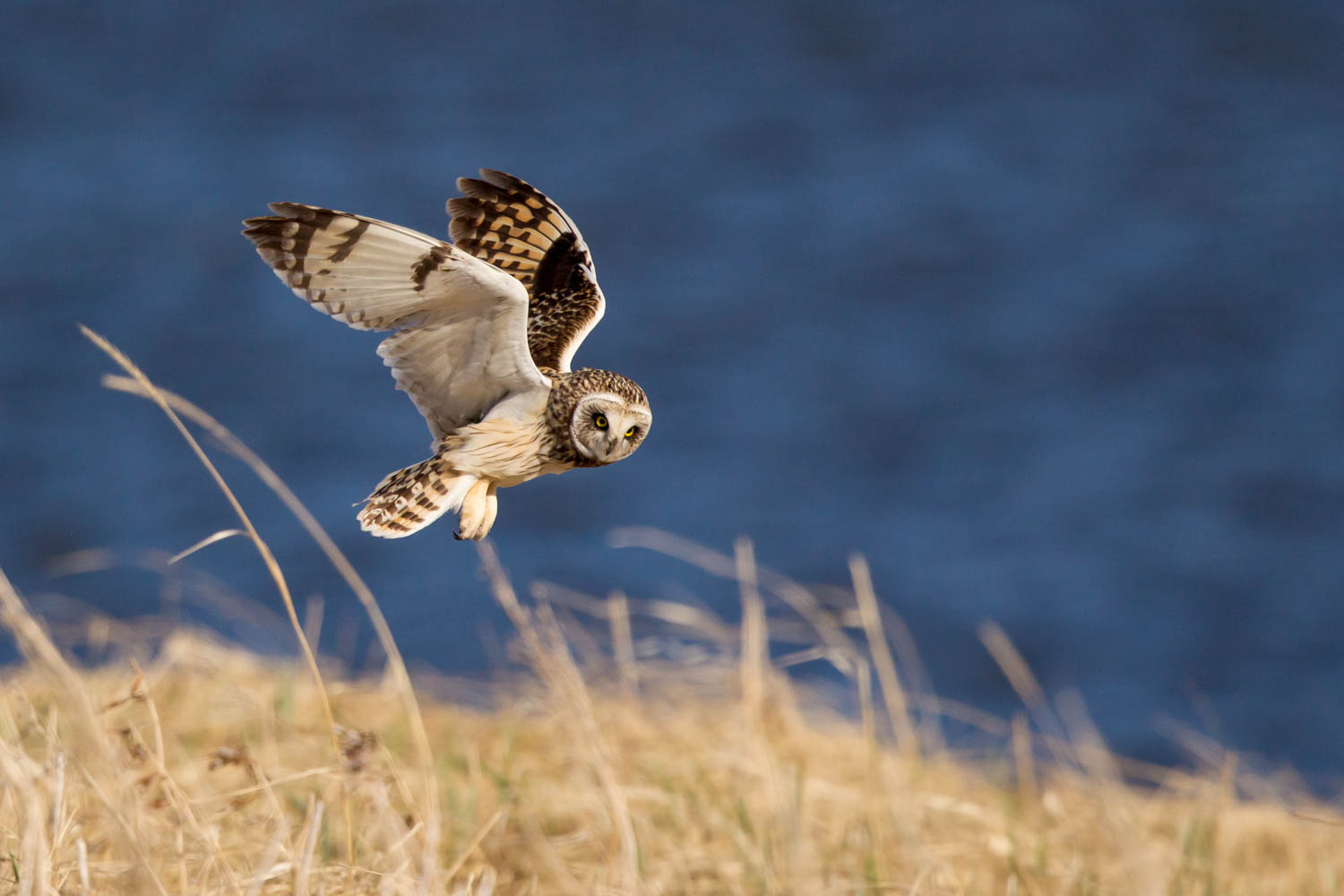
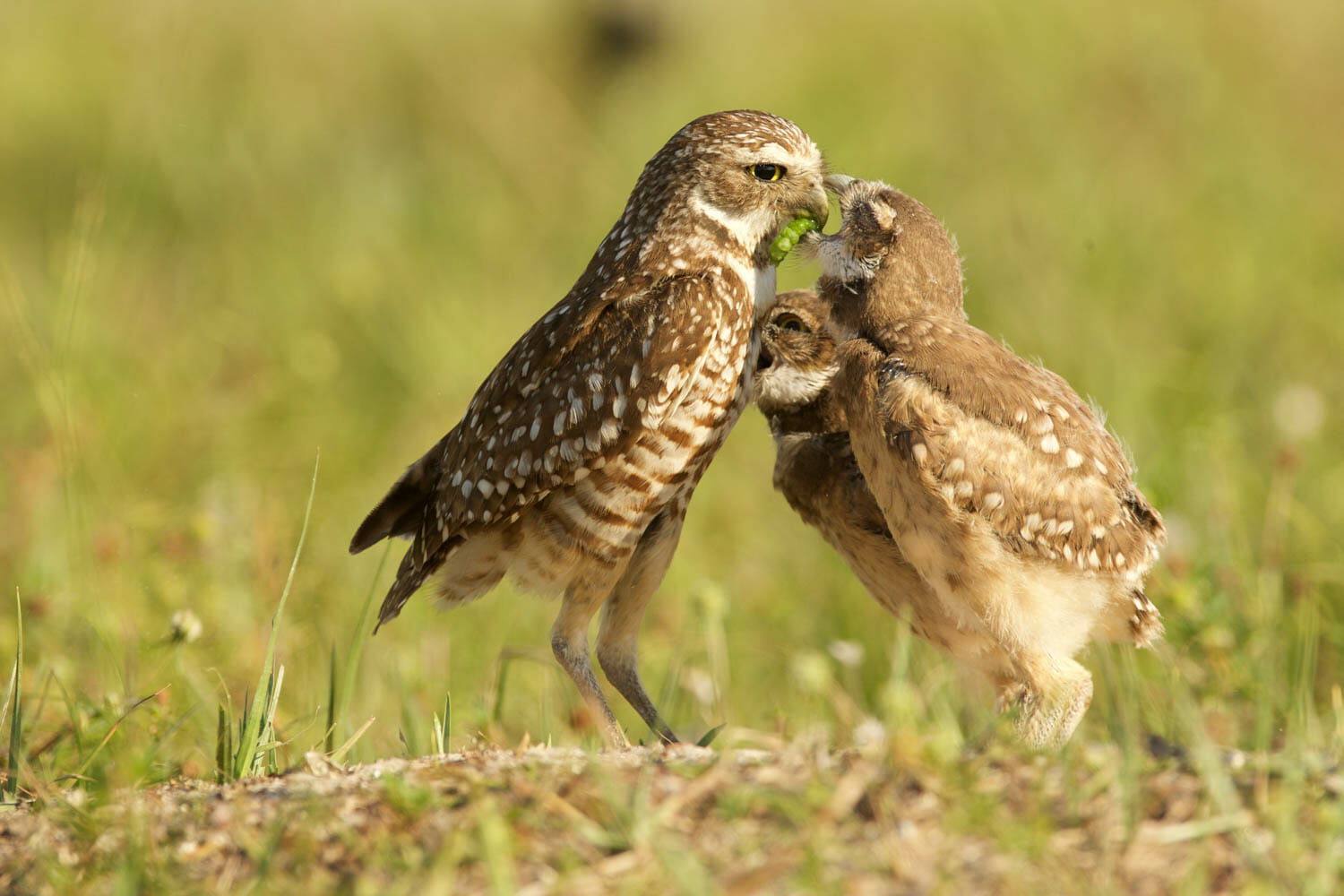
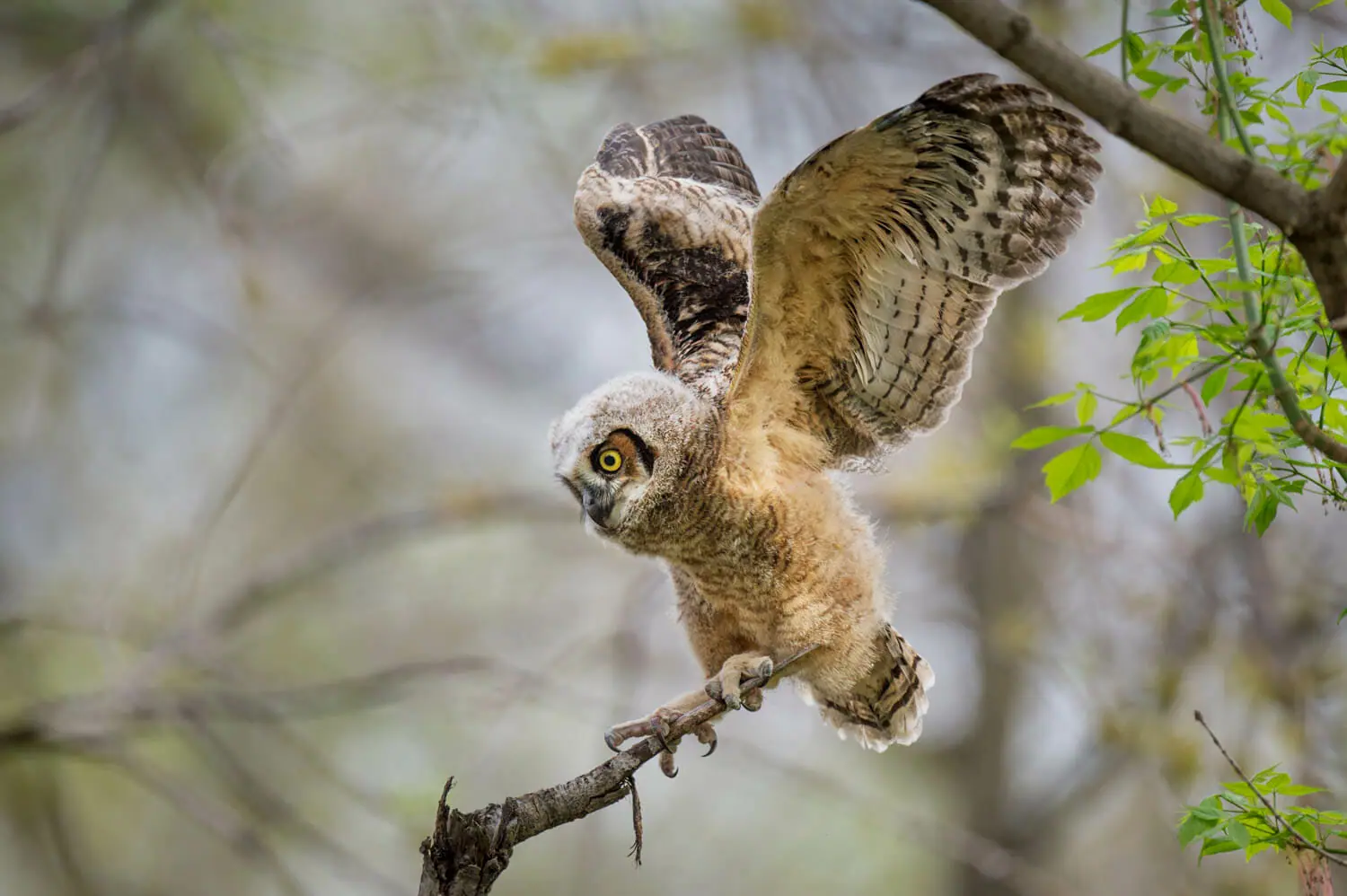

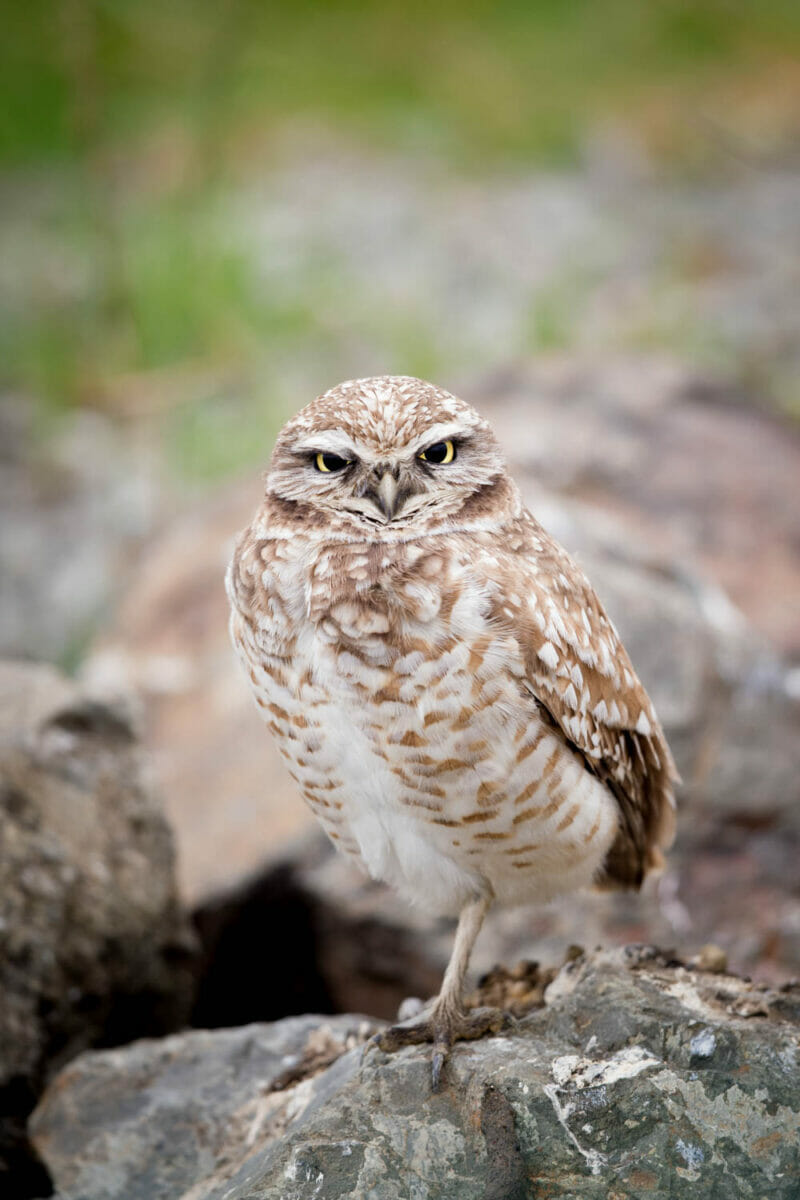
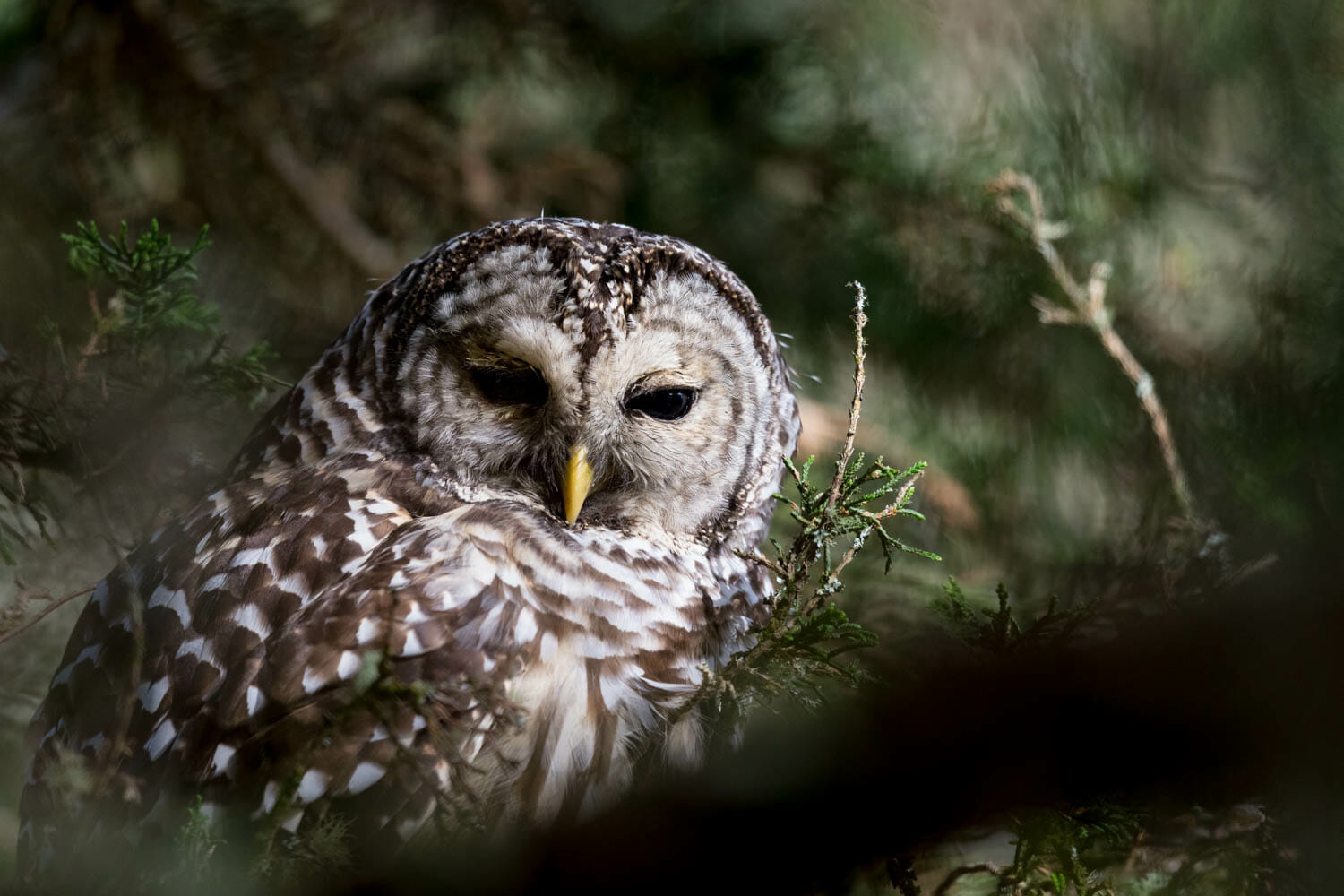
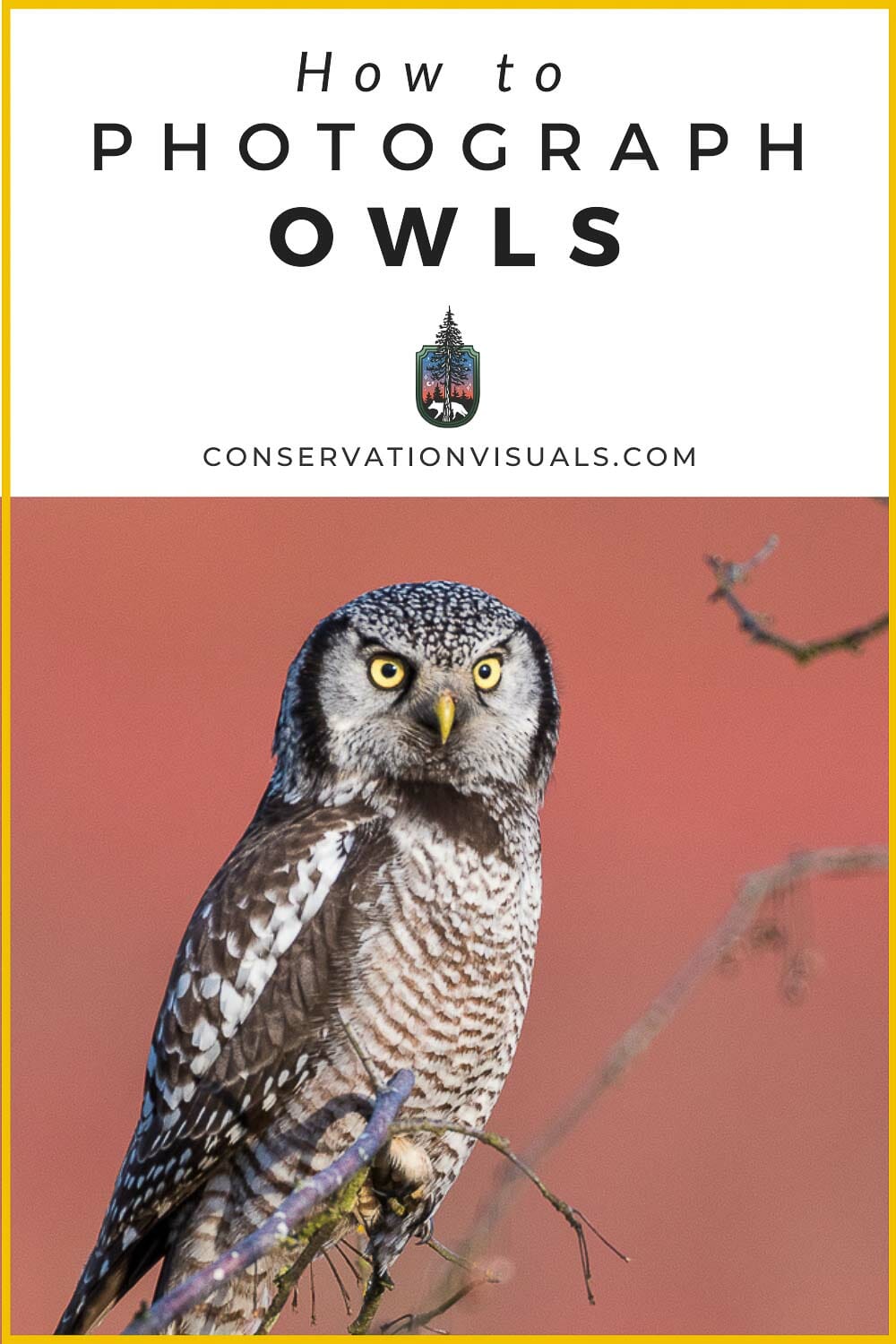











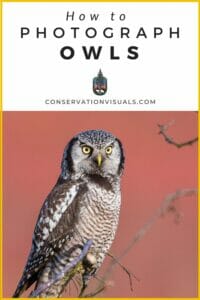
How to share your owl photos on social media